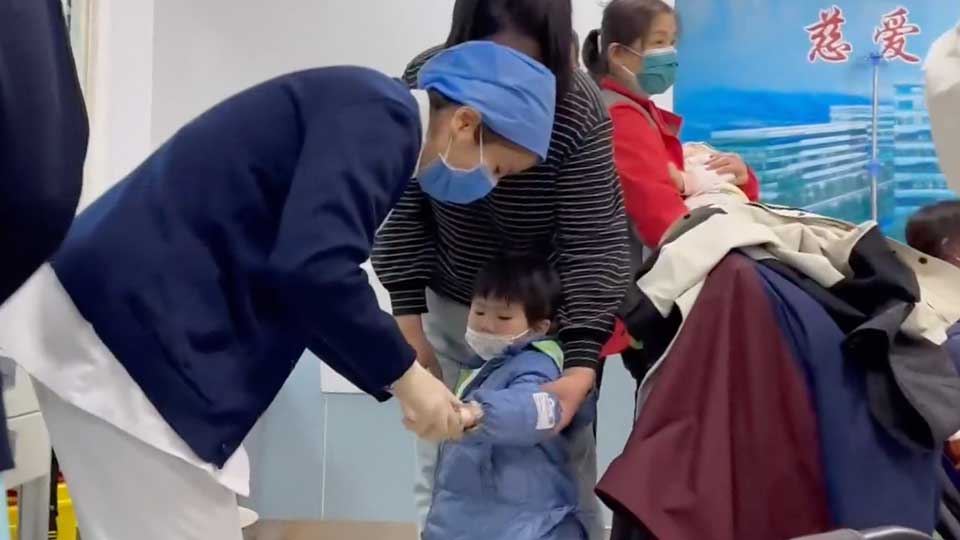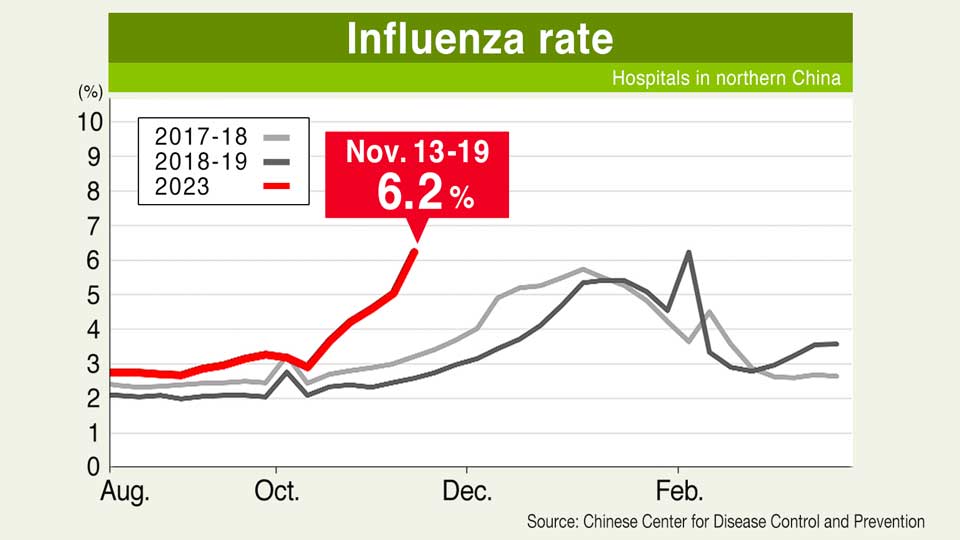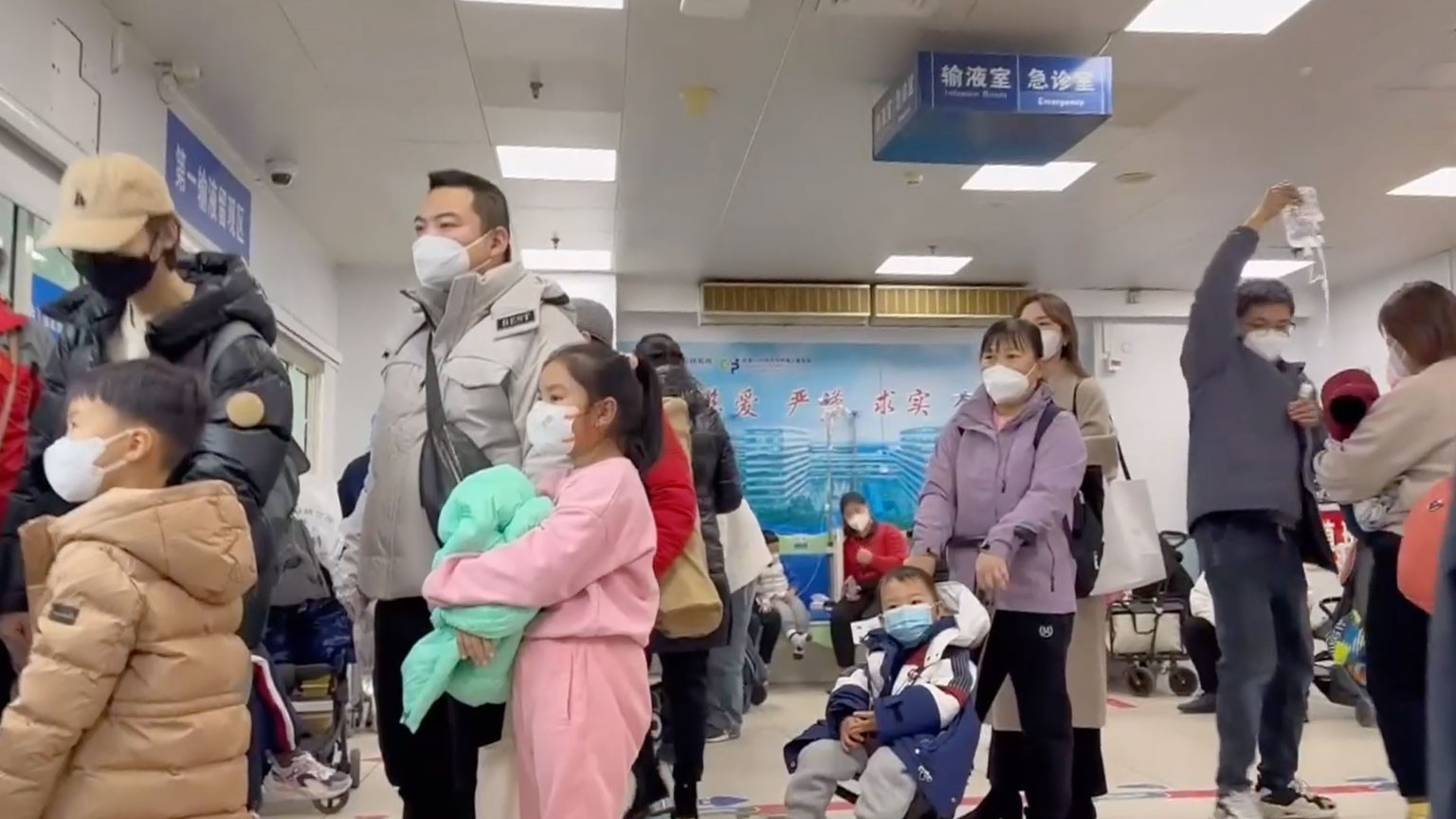Children's hospital inundated
A children's hospital in central Beijing offers emergency outpatient care. Its staff has been inundated with a constant stream of children who need a drip. The drip rooms are crowded with feverish children infected with influenza and other respiratory diseases.

A man whose daughter caught the flu said he can't do anything except take precautions such as sanitary measures. He added that his daughter was in bed all day. He said most of her preschool classmates are also ill.
A woman at the hospital said her 5-year-old daughter had been ill with mycoplasma pneumonia for a month. She had a fever for five days, with her temperature reaching 42 degrees Celsius. The mother thinks her daughter got sick because she went to crowded places without a mask. She said her daughter's preschool has told parents to keep kids home if they're coughing or have a sore throat.

According to the Chinese Center for Disease Control and Prevention — which oversees infectious disease control in China — the percentage of people who tested positive for influenza at hospitals for contagious disease control was 6.2% in northern Chinese provinces and other areas in the week through November 19. The same period in 2019 was 2%. The rate in southern Chinese provinces was 6.4% versus 3% in 2019.
The outbreak started about four weeks before the surge.
Expert view: Anti-COVID protocols lowered immunity
Wu Zhiwei, a senior researcher at Nanjing University's public health medical center, says after following anti-COVID protocols many people are less immune to various infectious diseases and that seems to be a factor behind the current surge.
Wu says patients with mild symptoms should stay at home instead of rushing to medical clinics. "The problem is the medical system will become overwhelmed and there is a risk of infection spreading in these hospitals," he explains.
Chinese government: No unusual or novel pathogens
Chinese authorities in early November started calling on people to be vigilant, saying there was a surge in mycoplasma pneumonia cases in the country's north. Fever and coughing are common symptoms.
On November 22, the World Health Organization asked Beijing to share information. The Chinese government reportedly offered data the following day. It said it had not identified any new pathogens and described the outbreak as a familiar surge in respiratory diseases.
Chinese Foreign Ministry spokesperson Wang Wenbin said there was nothing to worry about and it was safe to travel to China for business.
The National Health Commission on November 26 said the outbreak was mainly caused by the flu virus. The commission also pointed to other pathogens, such as the rhinovirus, which causes the common cold, and pneumonia, which causes fevers and coughing.
Health officials are calling on people to get vaccinated, wear masks and take other sanitary measures.
Professor Hamada Atsuo of Tokyo Medical University specializes in overseas infectious diseases. He says the surge in mycoplasma is abating but other pathogens such as the influenza virus, rhinovirus and coronavirus are spreading together with it in northern China. He adds that although the current situation is not very concerning, it needs to be monitored and preparations should be taken just in case.
